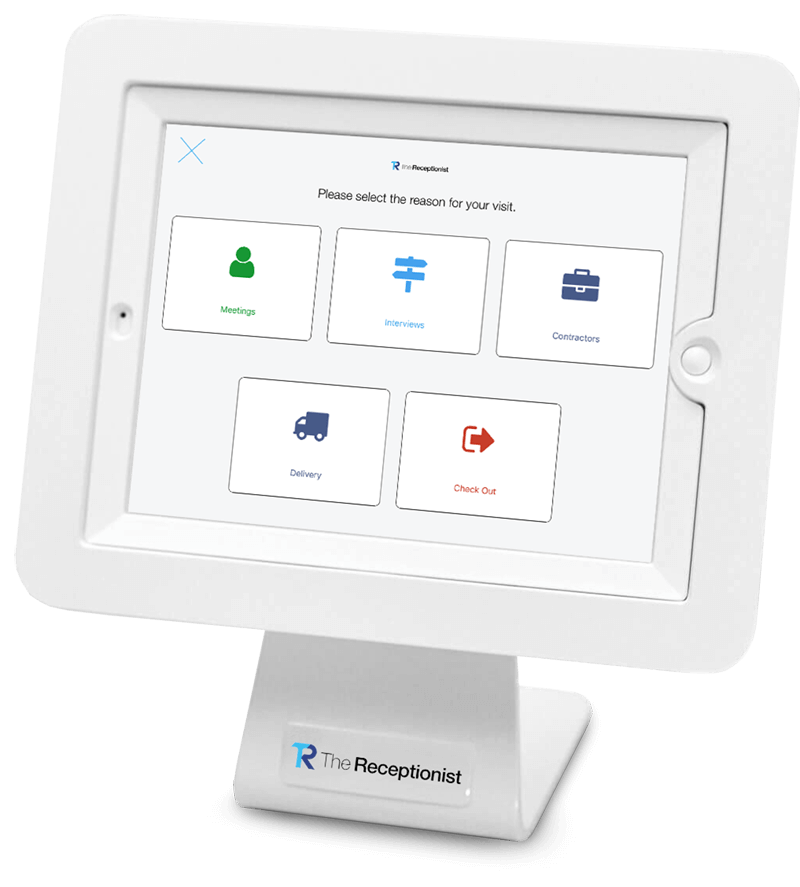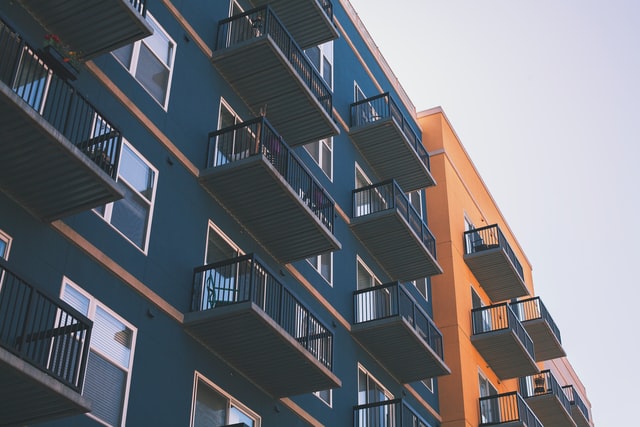In light of the COVID-19 pandemic, many co-ops, condo associations, and other residential building communities are reconsidering their buildings’ check-in procedures.
Measures that reduce personal contact in the lobby can help keep the building’s residents and staff safer from infection, and these measures may even be required by law in some jurisdictions.
For many residential buildings, this is where electronic check-in systems can offer a solution. These digital systems have been growing in popularity in the commercial sector for years, in some cases completely removing the human receptionist from the lobby area. Building managers and residential association leaders are starting to realize that these check-in apps can play a similar role in their buildings, too.
Read on to learn more about what you should be looking for in a residential visitor check-in system.
Delivery/package management features
Accepting packages on residents’ behalf may have been a big part of a door attendant’s responsibility before the current pandemic.
Although a digital system doesn’t have all of the advantages of a live employee when it comes to accepting packages, it can certainly provide a convenient (and contact-free) way to track deliveries and notify residents when they’ve arrived.
You can design a customized process for delivery people to use when they drop off a package. They can simply select “delivery” on the home screen (as shown in the example below) and fill out a few more fields to indicate where it’s from and who it’s for. You can design the process to give the delivery person custom instructions, or to send residents custom messages regarding their packages.
The system automatically keeps timestamped records of these deliveries, as well, which can be helpful from a recordkeeping standpoint.

Ability to handle infectious disease protocol and best practices
Your local jurisdiction and/or your residential community may have decided to require visitors to be screened for COVID-19 risk factors before they enter a shared building.
For example, visitors may have to confirm that they aren’t exhibiting any coronavirus symptoms or haven’t traveled to a coronavirus hotspot before they pass through to the building’s interior. Some buildings may require temperature checks, and may keep records of who each person is visiting in case they need to be contacted later related to health concerns.
Your residential visitor check-in system should be able to collect all that information and store it safely.
Some systems make it possible for visitors to check in without touching the tablet at all, using their personal smartphone to check in instead with a customized QR code. We explain more about how this works in our post Contactless Visitor Check-In: How to Do it Right.
Regardless of whether you implement contactless check in, you’ll also need to disinfect the check-in tablet regularly. For more on best practices for cleaning and aligning your check-in process with pandemic-related requirements, check out this post: Protect Your Office From the Risk of Infectious Disease — Starting in the Lobby.
Visitor recordkeeping features
Keeping a record of who is in the building at any given time can be important for safety purposes, such as in the case of emergency evacuations. (The best visitor check-in systems can create an emergency evacuation list in real-time.)
Good visitor records can also keep track of the activities of contractors, such as the cleaning service or maintenance crew, or people coming to perform other services for residents, such as dog walking or babysitting.
Finally, visitor records can also give building management a better sense of who is coming to the building over time and why. That can be helpful when it’s time to create policies or prioritize spending.
Respect for visitors’ privacy
Digital systems already have advantages over paper-based check-in systems when it comes to visitor privacy, due mainly to the fact that visitors can’t see a written record of the other people who have come and gone before them.
However, as we wrote in our post 4 Best Practices for Prioritizing the Privacy of Your Office Visitors, digital visitor logs still have the potential to infringe on privacy if admins are careless with visitors’ personal information.
Your association needs to have a plan for which pieces of visitor data to collect, how to keep that personal data stored security, and how (and when) to delete or dispose of the information safely.
Visitors should have to opt-in to the kinds of features that store visitor information, such as for easier check-in next time they return to your building. Visitors should also have the option to have their personal information deleted completely upon request.
The best visitor check-in systems can auto-delete visitor information at specified intervals to make sure it happens consistently.
The ability to customize the check-in flow
We’re living in a stressful time right now.
Experiences that used to be super-simple and pleasant, like popping over to a friend’s apartment, now require things like masks and written promises that you aren’t exhibiting certain medical symptoms.
That’s why your residents will appreciate it if the check-in process puts visitors at ease as much as possible while still prioritizing safety. They will want their guests to feel warmly welcomed, even in the absence of a smiling door attendant.
After all, where they live is a part of their identity, and visitors’ lobby experiences will reflect back on them as hosts.
Residents will want their guests to feel warmly welcomed, even in the absence of a smiling door attendant. Click To TweetCustomizing each part of the check-in process with friendly language and making the check-in process simple and intuitive can put your visitors at ease and even brighten their day. You can even consider adding a brief video or adding a few notes about how to get more help if they need it.
Co-op, condo, and apartment visitors might not be used to this kind of lobby technology. The last thing you want is someone stressed out and struggling as they try to check in. A customizable check-in process makes it easy for your staff to make changes as stumbling blocks are identified.
For more on how to make a digital check-in experience feel more “friendly,” check out our post Yes, You Can Welcome Office Guests Warmly via Tablet.
Try The Receptionist check-in system for free
Are you interested in trying out The Receptionist visitor management system to help manage your building’s changing visitor management needs? You can try the full system for two weeks in our no-obligation trial. Just head over to our home page and submit your email address to get started. Or get in touch to arrange a custom demo so we can show you exactly how it would work for your building.
We make it super easy for new users to get set up with packages that include an iPad and your choice of wall mount, desk stand, or floor stand. Plus, our Radical Support® team will be on hand to help with anything you need.
We hope to hear from you soon!
Share this Post

